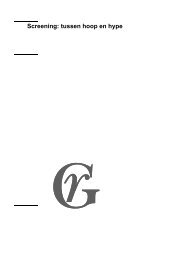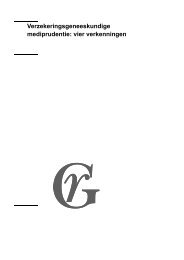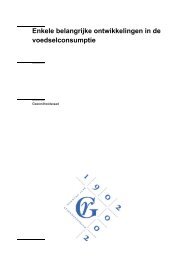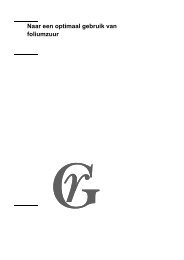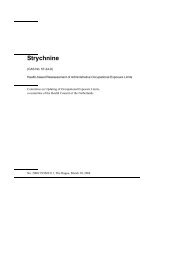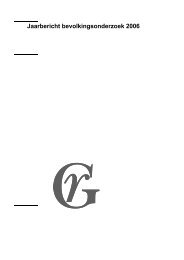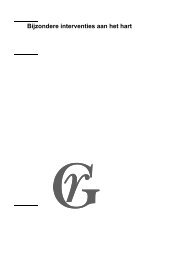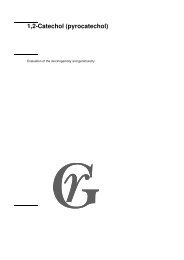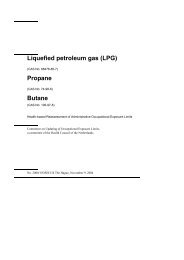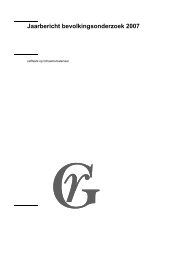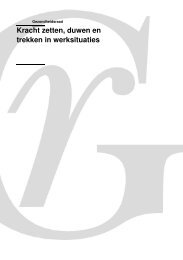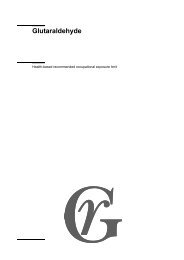Gezondheidsraad Dr. W.F.J.P.M. ten Berge Wolter Visscherstraat 40 ...
Gezondheidsraad Dr. W.F.J.P.M. ten Berge Wolter Visscherstraat 40 ...
Gezondheidsraad Dr. W.F.J.P.M. ten Berge Wolter Visscherstraat 40 ...
You also want an ePaper? Increase the reach of your titles
YUMPU automatically turns print PDFs into web optimized ePapers that Google loves.
G e z o n d h e i d s r a a d<br />
H e a l t h C o u n c i l o f t h e N e t h e r l a n d s<br />
<strong>Dr</strong>. W.F.J.P.M. <strong>ten</strong> <strong>Berge</strong><br />
<strong>Wolter</strong> <strong>Visscherstraat</strong> <strong>40</strong><br />
6931 CV WESTERVOORT<br />
Subject : comments on draft report 1,3-Butadiene<br />
Your reference : letter of January 19, 2013<br />
Our reference : I 1<strong>40</strong>1/BJB/fs/459-O68<br />
Enclosure(s) : 1<br />
Date : May, 31 st 2013<br />
Dear <strong>Dr</strong>. Ten <strong>Berge</strong>,<br />
Thank you for accepting the invitation to comment on the draft report 1,3-Butadiene, which was<br />
published for public review in October 2012 by the Dutch Expert Committee on Occupational<br />
Safety (DECOS) of the Health Council of the Netherlands. Your comments enabled the committee<br />
to modify and improve its report. On behalf of the President of the Health Council, I reply to your<br />
comments on the draft report in this letter.<br />
You note that the Committee used the leukaemia mortality data as reported by Cheng et al. (2007)<br />
and extrapolated these to mortality from all lymphohaematopoietic cancer, which in your opinion<br />
overestimates the risk of 1,3-Butadiene exposure. The Committee is well aware of the po<strong>ten</strong>tial<br />
pitfalls of this extrapolation. It is, however, of the opinion that there is sufficient information<br />
indicating the risk of various lymphohaematopoietics cancers following 1,3-Butadiene exposure<br />
(see, e.g., IARC 2008). In addition, the diagnosis and classification of lymphatic and haematopoietic<br />
malignancies is complex, and has undergone several changes in the course of time (as<br />
outlined in section 2.4 of the report). Thus, limiting the risk evaluation to leukaemia only would<br />
certainly result in an underestimation of the risk of developing cancer following 1,3-Butadiene<br />
exposure. The exposure-response data published for myeloid (implicitly also covered in the<br />
exposure-response of leukaemia) and lymphoid neoplasms are more limited than for leukaemia.<br />
The Committee noted that the exposure-response association as published in Cheng et al. (2007) is<br />
not noticeably different from the published association for leukemia, albeit that the slope-factor is<br />
lower. Given these uncertainties, the Committee prefers to use the leukaemia data of Cheng c.s.,<br />
and to extrapolate these to the malignancies listed in WHO’s ICD codes 81-96 (“malignant<br />
neoplasms, stated presumed to be, primary of lymphoid, haematopoietic and related tissues;<br />
excluded secondary and unspecified neoplasm of lymph nodes”). The Committee is aware of the<br />
resulting possible slight overestimation of the risk, but prefers this rather than ending up with an<br />
underestimation by limiting the risk to leukaemia only. The considerations above have been<br />
included in section 3.2 of the report.<br />
P o s t a l a d d r e s s<br />
V i s i t i n g A d d r e s s<br />
P . O . B o x 1 6 0 5 2 R i j n s t r a a t 5 0<br />
NL- 2 5 0 0 B B T h e H a g u e<br />
NL- 2 5 1 5 XP T h e H a g u e<br />
T e l e p h o n e + 3 1 ( 7 0 ) 3<strong>40</strong> 6 6 3 1<br />
T h e N e t h e r l a n d s<br />
E - m a i l : j o l a n d a . r i j n k e l s @ g r . n l<br />
w w w . h e a l t h c o u n c i l . n l
G e z o n d h e i d s r a a d<br />
H e a l t h C o u n c i l o f t h e N e t h e r l a n d s<br />
Subject : comments on draft report 1,3-Butadiene<br />
Our reference : I 1<strong>40</strong>1/BJB/fs/459-O68<br />
Page : 2<br />
Date : May 31 st , 2013<br />
Regarding the use of ‘peak exposure’ data rather than cumulative exposure, as advocated by<br />
Sielken et al. (2007, 2011), the Committee stays with its opinion that the exposures from high<br />
in<strong>ten</strong>sity tasks are rather ill-defined, and thus unreliable if taken as the sole basis for a risk<br />
estimation (as outlined in section 3.1). But it must also be emphasized that exposure data of high<br />
in<strong>ten</strong>sity tasks were actually used, in that these data are implicitly included in the Committee’s<br />
conditioning of the exposure-response modelling of the cumulative exposure data (see section 3.2).<br />
In the Committee’s life table analysis you object to the cumulative exposure being held constant at<br />
the end of the occupational exposure at the age of 60. This approach is, however, consis<strong>ten</strong>t with<br />
the underlying epidemiological data which uses cumulative exposure as the exposure metric and<br />
does not allow for modification of risk after cessation of exposure. As such, even if reasonable<br />
assumptions could be made on the rate of decline in risk after cessation of exposure, the underlying<br />
epidemiological risk data would not be sufficient to perform such an analyses. The Committee<br />
therefore prefers to follow its standard approach as detailed in the Health Council’s Guideline<br />
to the estimation of cancer risk values for carcinogenic substances (Leidraad berekening<br />
risicogetallen voor carcinogene stoffen, The Hague, The Netherlands, 2012; publ. no. 2012/16. An<br />
English version of this guideline is to be published shortly). In addition it must be noted that the<br />
mortality in the cohort after the age of 75 years increases dramatically, so that any excess due to<br />
leukaemia mortality after occupational exposure has a relatively small influence on the outcome of<br />
the analysis.<br />
The Committee appreciates your views on the toxicokinetics of 1,3-Butadiene in connection to<br />
peak exposures. These are very interesting from the scientific point of view, but the Committee is<br />
of the opinion that as yet it is not possible to use these as a solid basis for a (quantitative governmental)<br />
risk estimation.<br />
Enclosed you will find a copy of the final report.<br />
Yours sincerely,<br />
<strong>Dr</strong>. A.J. Baars<br />
Scientific Secretary<br />
P o s t a l a d d r e s s<br />
V i s i t i n g A d d r e s s<br />
P . O . B o x 1 6 0 5 2 R i j n s t r a a t 5 0<br />
NL- 2 5 0 0 B B T h e H a g u e<br />
NL- 2 5 1 5 XP T h e H a g u e<br />
T e l e p h o n e + 3 1 ( 7 0 ) 3<strong>40</strong> 6 6 3 1<br />
T h e N e t h e r l a n d s<br />
E - m a i l : j o l a n d a . r i j n k e l s @ g r . n l<br />
w w w . h e a l t h c o u n c i l . n l



